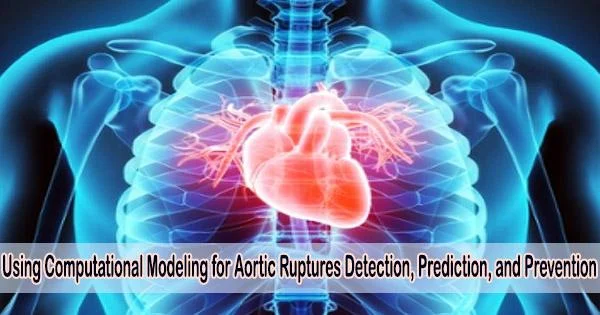An abdominal aortic aneurysm (AAA) weakens and protrudes the wall of the aorta, the biggest artery in the body, in a person. If unattended, it may enlarge and finally rupture, resulting in potentially fatal bleeding.
Up to 80% of individuals with a ruptured AAA are thought to pass away either before they get to the hospital or during operation. However, early intervention can stop rupture, enhance results, and stop death.
Researchers from the Indian Institutes of Technology (BHU) Varanasi and Kanpur created a computational model of the cardiovascular system for Physics of Fluids by AIP Publishing in order to forecast early AAA rupture and monitor patient blood vessel status.
The researchers looked examined how realistic, patient-specific AAA shapes affected the pulsatile Newtonian fluid hemodynamics in an aortofemoral artery in both healthy and sick states.
If an AAA is detected early, treatment options such as surgical repair or endovascular stent grafting are available to prevent rupture. These treatments are both effective at reducing the risk of rupture and improving survival rates.
The authors
A mix of imaging tests, including ultrasound, CT, and MRI scans, hemodynamics, and clinical variables like age, sex, smoking history, and family history of AAA are used to predict the risk of rupture.
“If an AAA is detected early, treatment options such as surgical repair or endovascular stent grafting are available to prevent rupture,” said the authors. “These treatments are both effective at reducing the risk of rupture and improving survival rates.”
The researchers examined several hemodynamic parameters and imitated various medical situations using image-based computational blood dynamics. They created 3D medical imaging data to create patient-specific geometric models of a human aortofemoral artery. They employed finite element-based simulations to resolve the blood flow controlling equations under the pulsing conditions brought on by the heart’s beating.
The group discovered that the distribution of blood flow velocity is altered by aneurysm size. Additionally, during systolic deceleration, flow separation takes place, and the vortex starts to move through the aneurysm sac. This could affect the blood flow to the lower extremities, among other intricate dynamics.
“In the future, such computational work will help in development of digital twins of the cardiovascular system,” said Kumar.
With the aid of virtual patient representations called “digital twins,” doctors may more accurately predict disease and determine the most effective course of treatment.
















